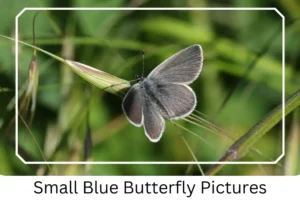Small Blue (Cupido minimus)
The Small Blue Butterfly, scientifically known as Cupido minimus, captivates enthusiasts with its delicate presence and fascinating lifecycle. This tiny butterfly, the smallest in the UK, thrives across diverse habitats, forming vibrant colonies. Its unique behaviors, including cannibalistic caterpillars and the meticulous process leading to the adult stage, illustrate the complexity of nature in miniature form.
Scientific Classification
- Family: Lycaenidae
- Genus: Cupido
- Scientific Name: Cupido minimus
Overview
Despite its diminutive size, the Small Blue plays a significant role in the ecosystem. Found in various regions from Europe to Kamchatka, it adapts to grasslands, woodland edges, and even human-altered landscapes like abandoned quarries. The lifecycle from egg to adult spans intriguing stages, each with distinctive characteristics that contribute to the butterfly’s survival and reproduction.
Description and Identification
Caterpillar
The journey of the Small Blue begins with cannibalistic caterpillars, which are prone to consuming each other if they hatch together on the same flower. These larvae undergo four instars, starting life almost white with a bluish hue and measuring just 0.8 mm at birth.
Pupa
Transitioning into pupae, they undergo a metamorphosis lasting 1 to 3 weeks, depending on the ambient temperature. The pupae exhibit a light green color with brown markings, suspending themselves head-up with a silk cincture.
Adult Butterfly
Sexual Dimorphism: Although subtle, differences exist between males and females, primarily in wing coloration.
Color and Appearance: Males boast dark brown dorsal sides with a scattering of bright bluish scales, while females lack this speckling. Both sexes share a pattern of black spots and a silver ventral side when their wings are closed. A distinctive light blue tint is present at the base of the male’s wings.

 Average Wingspan: Ranging from 16 to 27 mm, their size does not detract from their swift flight pattern.
Average Wingspan: Ranging from 16 to 27 mm, their size does not detract from their swift flight pattern.
Flight Pattern: The flight of the Small Blue is remarkably fast, belying its small stature.
Eggs
Females lay their eggs singly, with the light green eggs featuring white reticulations. These hatch within 1 to 3 weeks.
Quick Facts | |
| Distribution | Spanning from Europe to Siberia and Kamchatka, encompassing Asia Minor, Transcaucasia, Tian-Shan, Russia, Amur, Mongolia, and Magadan. |
| Habitat | Prefers grasslands, railway embankments, abandoned quarries, woodland edges, and clearings. |
| Lifespan of Adults | Approximately 3 months. |
| Host Plants | The kidney vetch (Anthyllis vulneraria) serves as the exclusive host. |
| Adult Diet | Females rely on plant nutrients, while males may also seek nutrients from carrion, dung, and mud puddles. |
How to Identify Small Blue Butterfly?
Identifying the Small Blue Butterfly involves noticing its unique characteristics amidst its habitat. Look for the smallest butterflies with a fast, erratic flight pattern, typically around grasslands and woodland edges. Males display a distinctive bluish shimmer on their dark brown wings when open, whereas females are more uniformly colored. Both sexes have black-spotted, silver ventral sides when their wings are closed. Observing the butterfly’s interaction with its host plant, the kidney vetch, can also aid in identification, as it is a key part of their lifecycle.
Did You Know?
- The female Osiris Blue butterfly’s similarity in coloration often leads to confusion with the male Small Blue.
- Colonies can number up to a few hundred individuals, showcasing their social nature.
- Not only is the Small Blue the UK’s smallest butterfly, but it also demonstrates a remarkable adaptability to different environments.
Conclusion
The Small Blue Butterfly embodies the resilience and complexity of nature in a minuscule package. Its lifecycle, from the cannibalistic caterpillar stage to the dazzling adult stage, showcases the intricate balance of survival. Understanding and appreciating the Small Blue’s role in our ecosystem helps underscore the importance of conserving their habitats for future generations to marvel at this tiny wonder.









